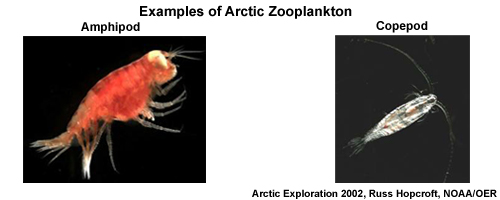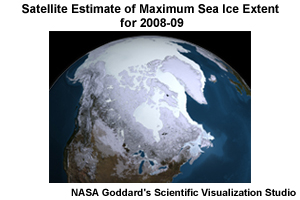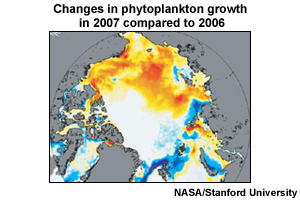Introduction
Scientists predict that the climate in most parts of the world will warm dramatically in the next century, with change expected to occur earliest and be most pronounced in polar regions. In light of this, there is an urgent need to understand different aspects of the Earth's climate system, including the role that Arctic ecosystems play in regulating the Earth's climate and how food webs are affected by the changing climate.

Like almost all other marine food webs, at the base of the Arctic marine food web are phytoplankton and zooplankton. Phytoplankton are microscopic plants (referred to as algae) that live in oceans and lakes (and swimming pools!). They serve as the primary food source for aquatic life and they consume carbon, an element which has a large influence on global climate.

Zooplankton are microscopic animals that feed on phytoplankton. They in turn are food for larger organisms like fish and whales. It is essential to understand what is happening to phytoplankton and zooplankton because they are the foundation of the food web. They are being exposed to unprecedented conditions and it is not known how they will respond.

Sea ice is ice that forms on the surface of the ocean when ocean water freezes. Ice affects the amount of light that enters the ocean's surface and is available for phytoplankton to grow. Sea ice is also an important habitat for organisms from ice algae to seals and whales.

We can study polar phytoplankton and zooplankton by using computer models to predict phytoplankton growth and zooplankton "grazing". The knowledge gained from such studies will help scientists understand the fate of marine organisms as temperatures warm. Additionally it will help us understand how phytoplankton themselves affect the climate, now and in the future.
This module uses a computer model to simulate a simple Arctic ecosystem. The user can vary the model parameters to see for themselves what the most important variables are and how the ecosystem responds to differing environmental conditions.
